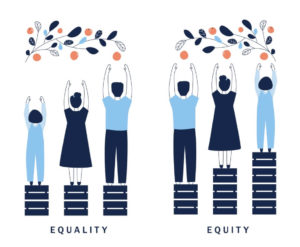Mit diesen Diversity Management Maßnahmen profitieren Sie von der Vielfalt Ihres Teams & sorgen für ein gutes Miteinander am Arbeitsplatz.

Personelle und soziale Vielfalt im Unternehmen lassen sich mit Hilfe von Diversity Management konstruktiv nutzen. Ob Alter, Geschlecht oder ethnische Zugehörigkeit – die unterschiedlichen Eigenschaften der Mitarbeiter können zum Pluspunkt für Arbeitgeber werden, sofern sie anerkannt und gefördert werden.
Wir präsentieren effektive Maßnahmen, mit denen Sie Ihr Diversity Management voranbringen.
In jedem Unternehmen gestaltet sich der Umgang mit Diversität unter den Mitarbeitern anders. Prinzipiell umfasst das Konzept des Diversity Managements jedoch vier Schritte, die überall ähnlich sind.

Es gibt verschiedene Möglichkeiten für Arbeitgeber, um die Diversität im Team zu fördern. Die folgenden Optionen sind sowohl für Unternehmen geeignet, für die das Thema Neuland ist, als auch für solche, die ihre bisherigen Maßnahmen ausweiten möchten.
Bei international besetzten Teams kann es zu Problemen in der Kommunikation und gegenseitigen Verständigung kommen. Durch das Angebot von Sprachkursen oder die Nutzung von Übersetzungs-Tools kann dem entgegengewirkt werden.
Aushänge, Veröffentlichungen und Dokumente in Unternehmen können genauso wie die Kommunikation nach außen in verschiedenen Sprachen erfolgen. Bspw. fühlen sich durch Stellenausschreibungen in verschiedenen Sprachen mehr (internationale) Talente angesprochen.
Der Alltag von Kollegen mit Kindern unterscheidet sich teils drastisch von dem von Mitarbeitern ohne Nachwuchs. Unternehmen können die Eltern unter ihren Angestellten dabei unterstützen, Kinder und Beruf unter einen Hut zu bekommen.
Handelt es sich um ein größeres Unternehmen, das viele Mitarbeiter mit Kindern hat, ist bspw. die Einrichtung eines Betriebskindergartens oder eines -horts möglich. Kleinere Unternehmen können mit flexiblen Arbeitszeiten und Home Office-Optionen unterstützen, dass Eltern ihre Kinder bspw. rechtzeitig von der Schule abholen oder an bestimmten Tagen die Betreuung sicherstellen können.
Auch heutzutage kommt es in der Business-Welt noch viel zu häufig vor, dass das Geschlecht einer Person bei der Bezahlung oder Zuteilung von Verantwortung mehr gewichtet wird, als ihre Kompetenzen.
Um hier für mehr Gerechtigkeit zu sorgen, braucht es eine gezielte Frauenförderung in Unternehmen. Die fängt an bei gendergerechter Kommunikation und reicht bis zur Zusammenstellung von Teams mit unterschiedlichen Geschlechtern und gleichem Lohn für gleiche Leistung.
Das Geschlechter-Thema geht weit über die Gleichbehandlung von Mann und Frau hinaus. So geht es u. a. auch darum, transsexuelle Menschen vor Diskriminierung zu schützen – bspw. durch ihre Berücksichtigung im Stellenausschreibungstext (w/m/d) oder Schutz vor Anfeindungen am Arbeitsplatz.
Das könnte Sie auch interessieren: So gelingt Recruiting ohne Diskriminierung
Wenn es in Ihrem Unternehmen Mitarbeitende mit Behinderungen gibt, sollten Sie den Arbeitsplatz auf ihre Bedürfnisse ausrichten und für Barrierefreiheit sorgen. Idealerweise gibt es spezielle Ansprechpartner zu den Themen Inklusion und Barrierefreiheit.
Sind Teams altersgemischt zusammengestellt, treffen verschiedene Erfahrungslevel, Werte und Vorstellungen aufeinander. Daher ist in diesem Zusammenhang die Etablierung einer Kultur der gegenseitigen Wertschätzung besonders wichtig.
Außerdem sollte Raum geschaffen werden für Wissenstransfer und Austausch zwischen den Generationen. Das gilt natürlich in beide Richtungen – die Jüngeren helfen den Älteren und umgekehrt.

Die soziale Herkunft kann die Bildungs- und Berufs-Chancen eines Menschen stark beeinflussen. Zwar hört man häufig, dass “alle die gleichen Chancen hätten”, individuelle Lebensumstände machen dieser Theorie jedoch häufig einen Strich durch die Rechnung. Angehörigen von unteren Schichten ist der Zugang zu Ressourcen, die für einen erfolgreichen Werdegang in der Regel notwendig sind, häufig verwehrt.
Kostenfreie Trainings und Mentoring-Programme für Nicht-Akademiker, offene Networking-Möglichkeiten und die Unterstützung von Menschen mit geringem Bildungsgrad bei ihrer Ausbildung sind mögliche Ansätze für Unternehmen, um diese sozialen Gruppen zu unterstützen.
Mit den genannten Maßnahmen können Sie in vielerlei Hinsicht profitieren. Die Wertschätzung und Förderung der Individualität Ihrer Angestellten lässt den Teamzusammenhalt wachsen und stärkt die Mitarbeiterbindung. Beide Faktoren führen in der Regel auch zu einer Leistungssteigerung. Eine „bunt gemischte Truppe“ birgt zudem ein breites Spektrum an unterschiedlichen Fähigkeiten, deren Zusammenspiel für ein hohes Maß an Kreativität und Innovationsfähigkeit sorgt.
(Quelle Titelbild: Flamingo Images – Shutterstock.com)